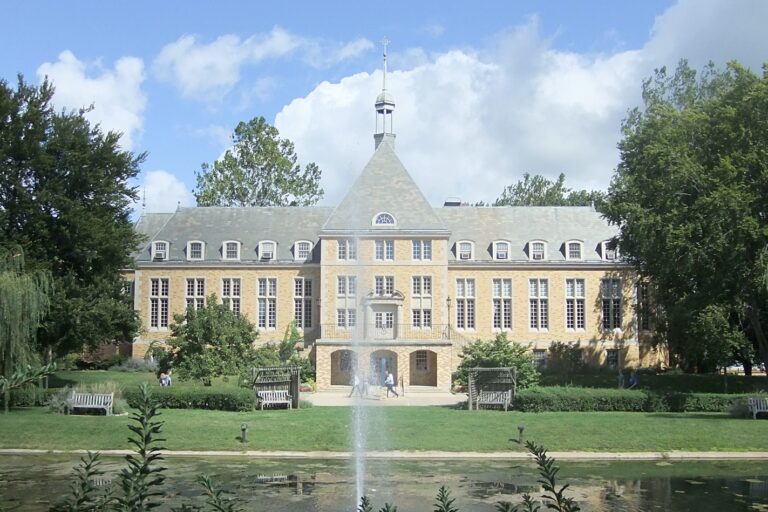The sprawling island continent of Australia, once viewed as a land of adventure and forward looking people, now faces a desiccated future of childlessness.
During the period from 1972 to 1989, Australian birth and reproduction rates show a steady decline. Between 1972–87, fertility declined by one-third. From 1975–86, families with three or more children fell from 33% of families with children to 24%, and families with four or more from 12% to 6%.
In an article in the August 1987 issue of Australian Economic Trends published by Lumley Insurance and Investment Corporation, Emeritus Professor A.H. Pollard, former Professor of Economic Statistics at Macquarie University and Head of the School of Economics and Financial Studies, points out that the main reason for the high level of unemployment and the unhappy state of the Australian economy is the move to smaller families:
If the birthrate had remained at the 1971 level, there would be an extra one million children under 16 in Australia today. In schools alone this would mean an extra 54,000 jobs if class sizes were maintained. If school sizes were maintained, an extra 2,700 schools would be required.
One million extra children means a 25% increase in the under 16 population. Imagine what a 25% increase in demand for children’s shoes and clothing, a million extra beds, extra food, toys, sporting goods, etc., would do for the economy.
Since 1987, there has been a further decline in the birthrate. According to the Australian Bureau of Statistics, in 1986 the crude birthrate was 15.2 per 1,000, in 1987 it was 15.0, and in 1988 and 1989 it was 14.9.
The Female Reproduction Rate in 1989 was .884. Replacement level is 1, so the Australian reproduction rate is almost 12% below replacement level.
In addition, Australian women are leaving childbearing until their later years. Women aged 30 and over accounted for 30% of the total fertility rate in 1989 compared to 25% in the early 1970s. One in five babies born in Australia in 1989 were to unmarried mothers.
The Abortion Complication
One factor undoubtedly contributing to Australia’s low birthrate is the high incidence of abortion. In a press release issued on 23rd September 1990, Federal MP Alasdair Webster, who has indicated his intention to reintroduce into Federal Parliament his Private Member’s Bill to cut the Medicare abortion subsidy, points to the sharp rise in the number of abortions claimed under Medicare during 1989–90.
He said: “During 1989–90, abortionists were directly subsidized by the taxpayer for almost 70,000 abortions at a cost of $7.8 million.” The numbers consisted of 68,743 (Medicare Item 6499) abortions and 844 late-term abortions (Medicare Item 274/275). This does not include the abortions not claimed for, nor those abortions performed in public hospitals. Therefore, the total Australia-wide figure for all abortions in 1989–90 is probably in excess of 85,000.
“The latest figures released to a Senate Estimates Committee in September represent an increase of 4,800 over the previous year and an increase of 7,600 in the past two years.”
Mr. Webster described the trend as disturbing and said that the number of live births in Australia increased by only 1.9% from 246,193 in 1988 to 250,996 in 1989 (this increase reflects an increase in the number of women of childbearing age, not an increase in fertility) whereas Medicare-funded abortions from 1988–89 to 1989–90 increased by 7.4%. He added that he intended to reintroduce his “Abortion Funding Abolition Bill” in the House of Representatives this Session: “Federal Parliament cannot continue to turn a blind eye to the facts revealed by these figures.”
Other factors which contribute to Australia’s low birthrate are the financial disincentives in the taxation and social welfare systems. Single-income families pay more tax than two-income families on the same total income because each wage earner is allowed a $5,200 tax-free income threshold. Thus, two-income families enjoy $10,400 tax-free even if their total income is the same as that of a single wage earner.
Another disincentive to family formation is the discrimination in child care funding. Families who place their children in government child care centers enjoy substantial subsidies ranging from $70 to $170 per week. Mothers who stay at home to care for their own children receive nothing.
Immigration to Replace Australian Children?
Since the early seventies, a racially non-discriminatory immigration policy has applied in Australia. Applicants for immigration are assessed on their merits, with extra points being awarded for family reunion. Currently Australia accepts somewhere between 120,000 and 133,000 immigrants per year. Between March 1989 and March 1990, the immigrant intake was comprised of the following categories: 43,000, preferential family reunion; 22,500, concession family reunion; 11,800, skilled component; 10,400, business migration; 400 special talents; 29,000, independent; 1,000, special eligibility; 12,000, humanitarian.
During the same period, approximately 11,940 former settlers left Australia permanently or on a long-term basis.
During the late 1970s, Australia comfortably absorbed about 15,000 refugees per year, mostly from Indo-China. Since 1988 this figure has been reduced to approximately 12,000, of which about half were from Indo-China. Then in 1990, following the Tiananmen massacre, the Australian government gave “temporary” residence to 20,000 Chinese students currently in Australia. Eventually, most of these students will probably be granted permanent residence.
On a pro-rata basis, Australia, since the fall of Saigon to the Communists, has probably taken more refugees than most other Western countries. However, Mr. Bob Santamaria, Australia’s leading intellectual and President of the National Civic Council (NCC), an anti-communist, pro-family organization, argues that, carefully managed, Australia could take many more refugees.
He says that in any case Australians have little choice but to accept refugees. The nation barely has the defense capacity to repel a Taiwanese fishing boat and “in the years to come there will be millions of refugees from Southeast Asia — Vietnam, Cambodia, Burma, Sri Lanka, Hong Kong and perhaps even China itself. Asian governments will do what the Indonesian government is doing today — give them food, compasses, maps, and point them in the direction of Australia. Australia cannot do the same thing — where could we send refugees? New Zealand? Antarctica?” The NCC has launched a petition opposing the forcible repatriation of refugees, and in accord with Christian ideals has asked the Australian government to accept more refugees, particularly those who have risked their lives to reach our shores. Endeavour Forum has supported this petition.
Population Control Ideologues
Despite Australia’s large area (7.6 million square kilometers) which is about the same size as the continental USA, and despite a small population of 17 million and below-replacement level of reproduction, we have not been spared a recent visit by Paul Ehrlich, guru of Zero Population Growth, who has been busy peddling his book, The Population Explosion and his discredited neo-Malthusian theories. Ehrlich was invited by the Australian Conservation Foundation and the Museum Society of Sydney.
Both Mr. Santamaria and Mr. Peter Westmore, Secretary of the National Civic Council and editor of its journal News Weekly, have vigorously disputed Ehrlich’s contention that world population is outstripping food production. During his 1971 visit, Ehrlich asserted that India was so far behind in the population food line that there was no hope that any food aid would see it through to self-sufficiency. Since it was doomed to a disastrous famine from which nothing could save it, Ehrlich actually recommended the suspension of food aid. He also recommended compulsory population control if voluntary incentives and penalties failed.
Santamaria and Westmore point out that 1971 was, in fact, the year in which India became basically self-sufficient in food and this favorable development actually accelerated. During 1980–86, India’s population increased by 12% but its cereal production increased by just under 25%.
Australia’s distinguished economist Colin Clark, who died in 1989, also rejected Ehrlich’s views that natural resources would run out. Clark said that when he was a first-year student in 1925, his lecturers told him quite firmly that the world oil supply would run out in 1940. As 1940 approached, he asked some oil men, and they said, “We’re all right, but we will run out in 1955.” By the 1950s he didn’t bother to ask them anymore. It was quite clear they ran their exploration policy to keep about 15 years in reserve. Clark said that when a shortage develops of some product, the price goes up and chemists and engineers devise substitutes.
In 1972, demographer Alfred Sauvy said that since Australia is situated “almost teasingly opposite the immense mass of Asia with its large and growing population, the lively campaign for Zero Population Growth (ZPG) in Australia begins to look like national suicide.”
His analysis is echoed by Bob Santamaria. In 1990, he argued in favor of large families and a wisely managed increase in immigration and refugee-intake. Santamaria says the destruction of Australia’s reproductive capacity “will not result in a paradise for the Greens, a land in which the birds, the bees and the flowers will sing some tunes even if the European race does not. The land will be occupied by Vietnamese, Chinese, Indians, Indonesians. It is hard to argue against it. People without land have a right to land without people.”
Mrs. Babette Francis is a freelance writer and regular columnist for the Toorak Times. For ten years she was a broadcaster for Radio Australia.










